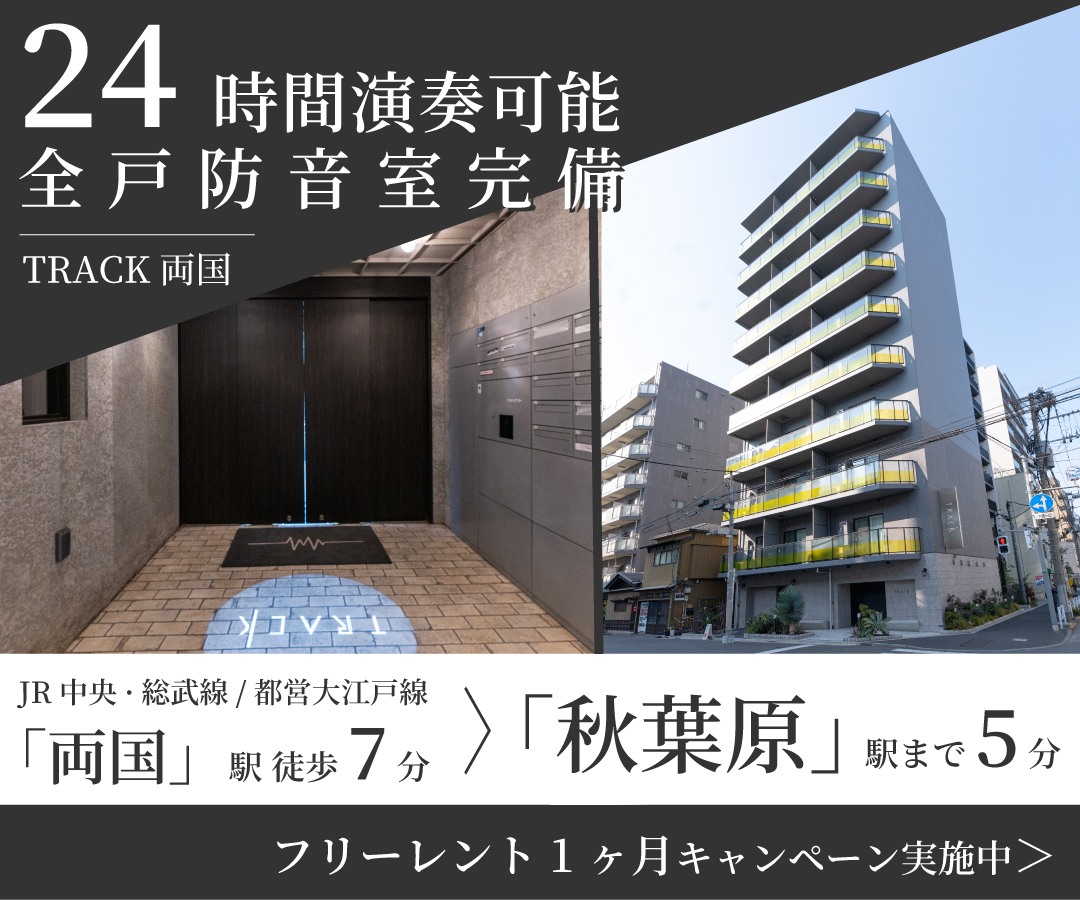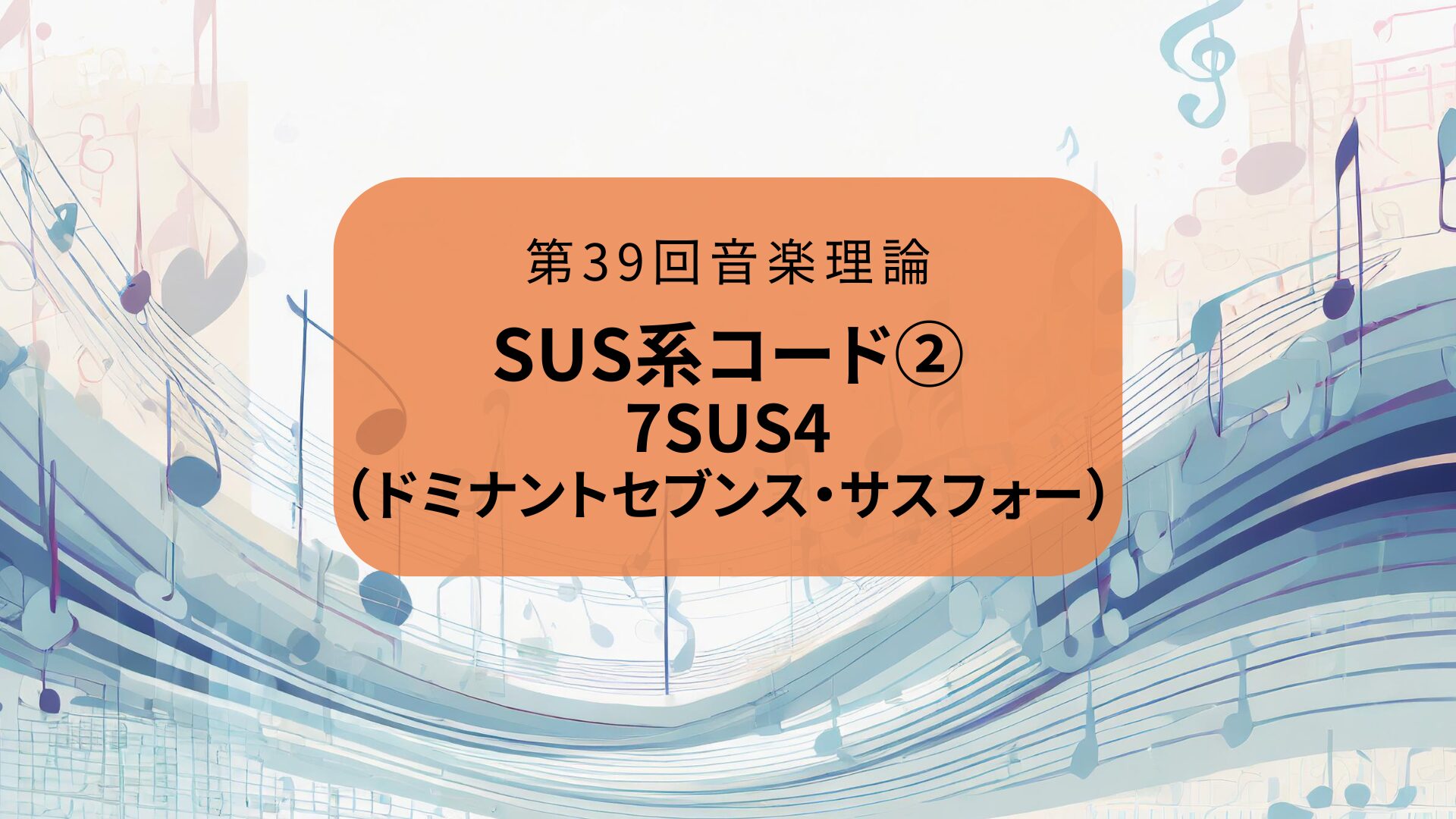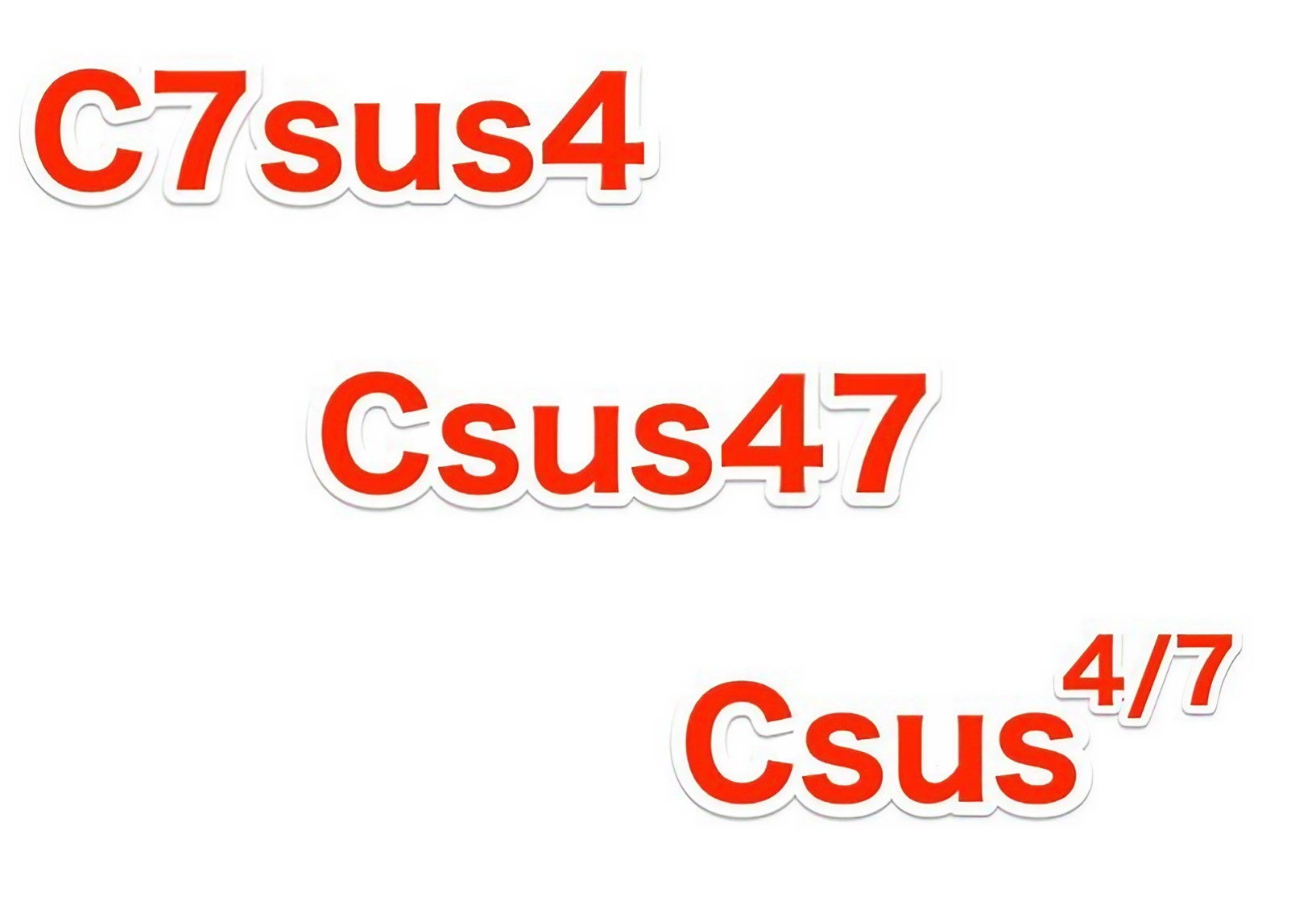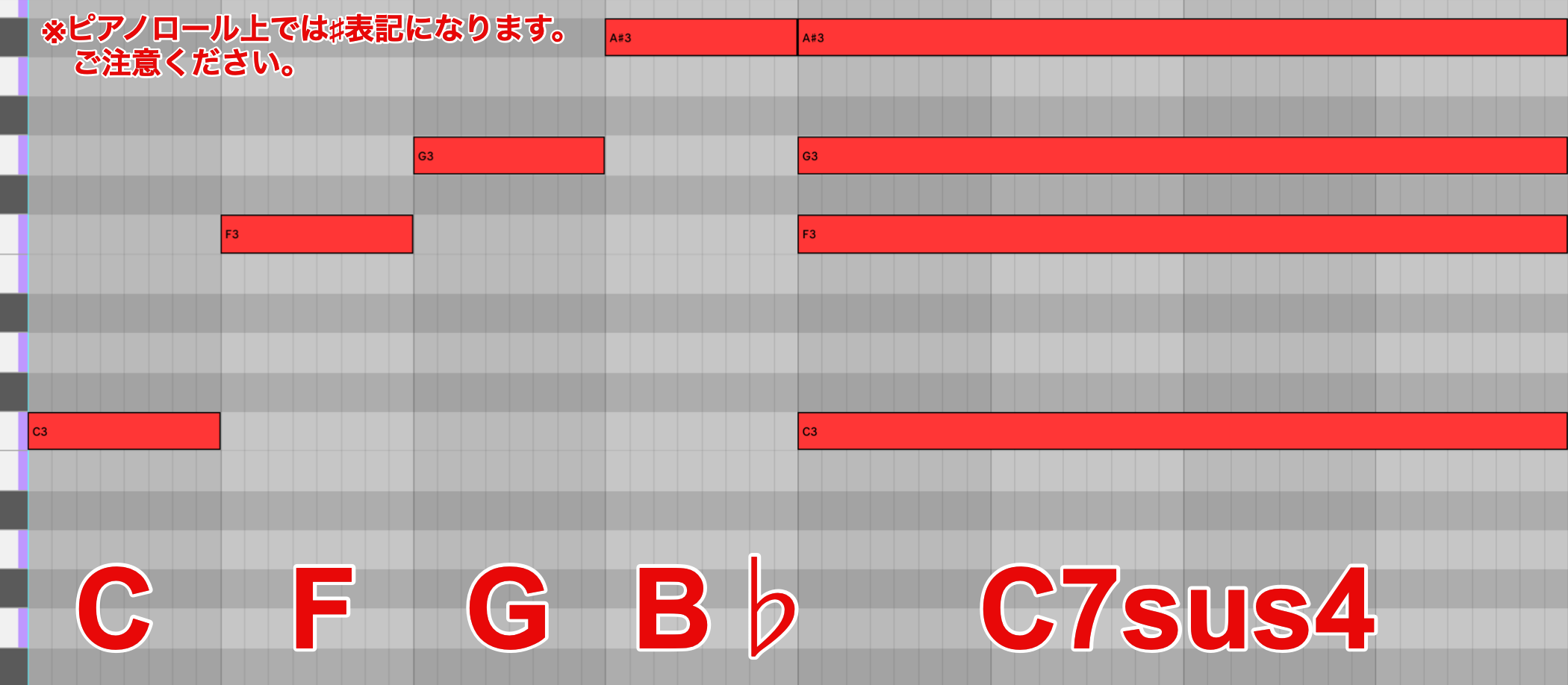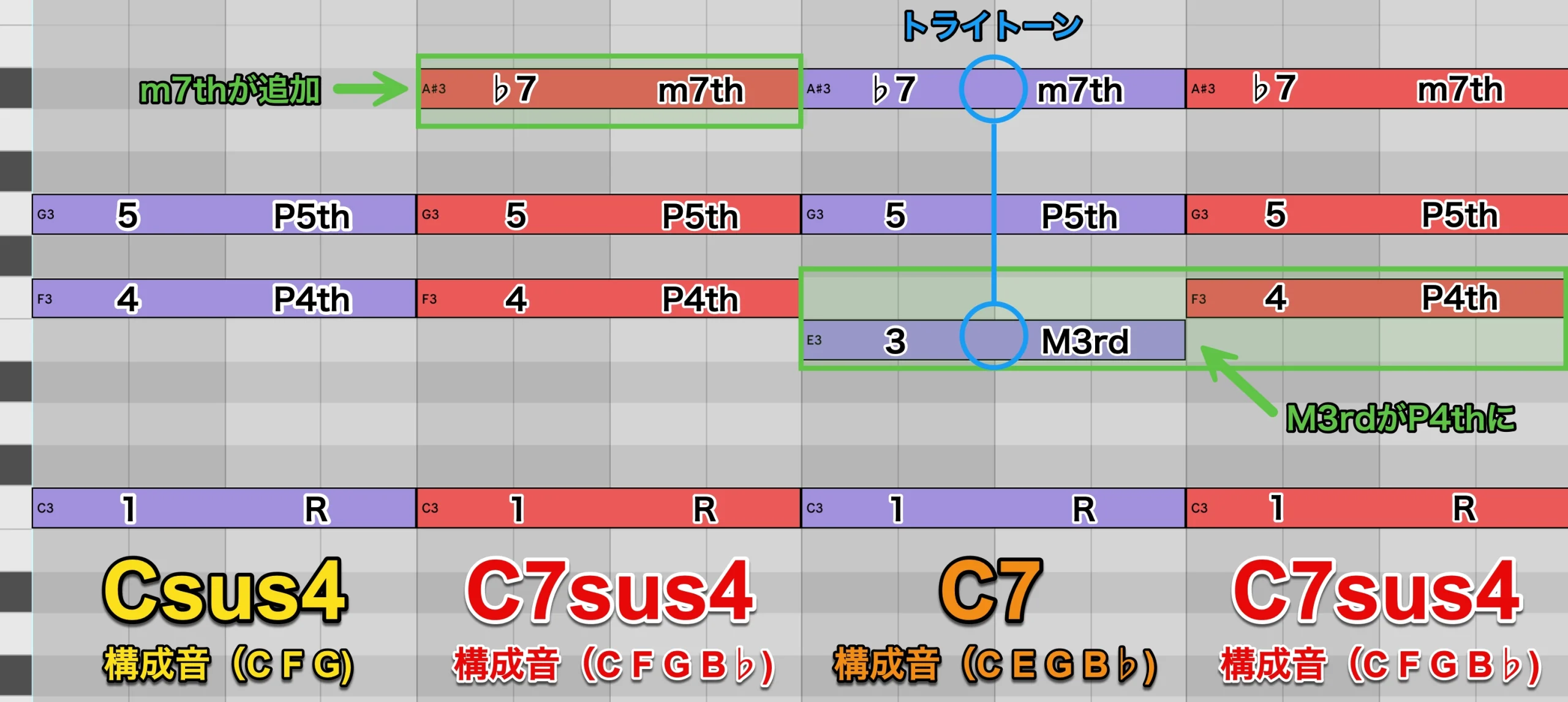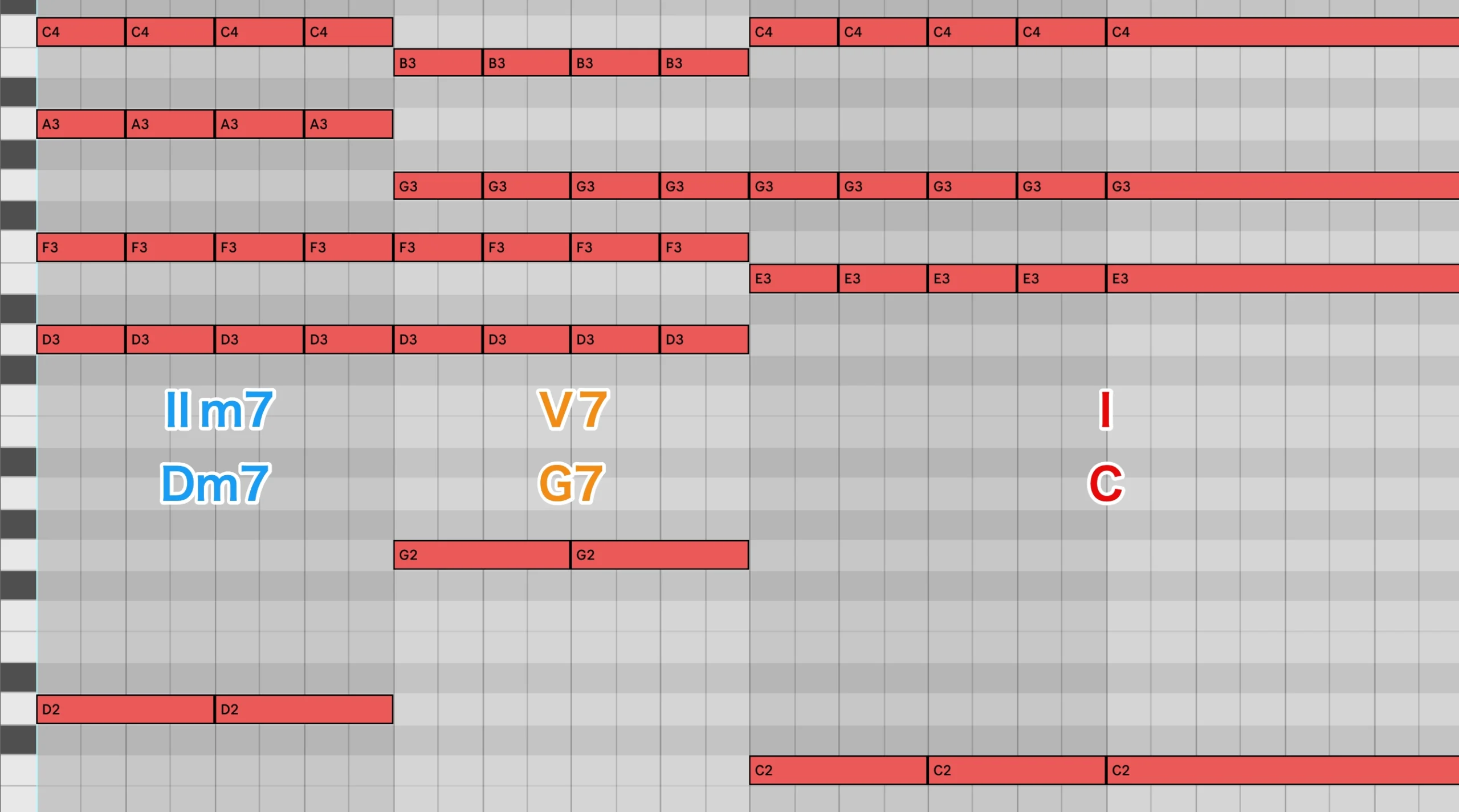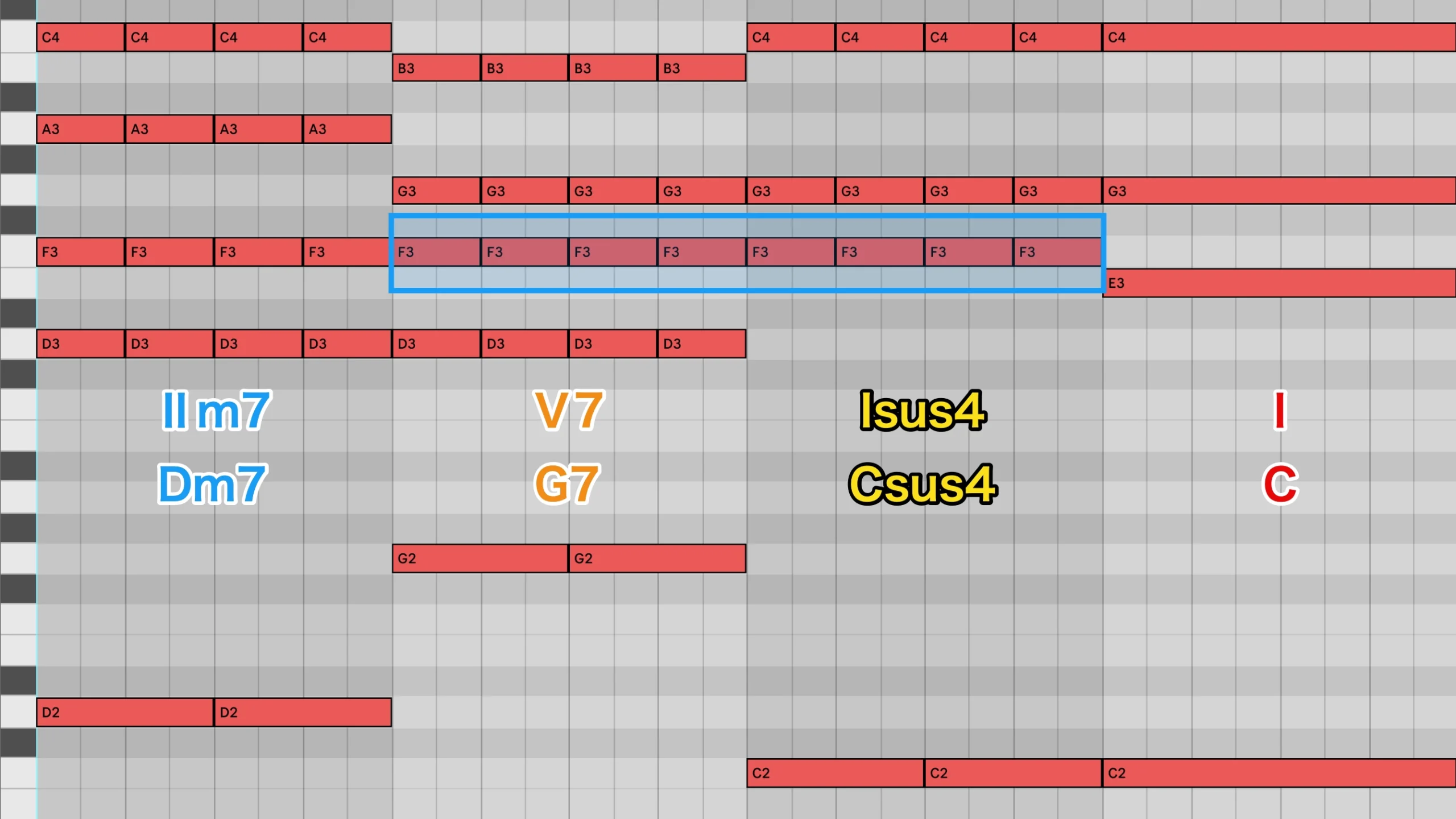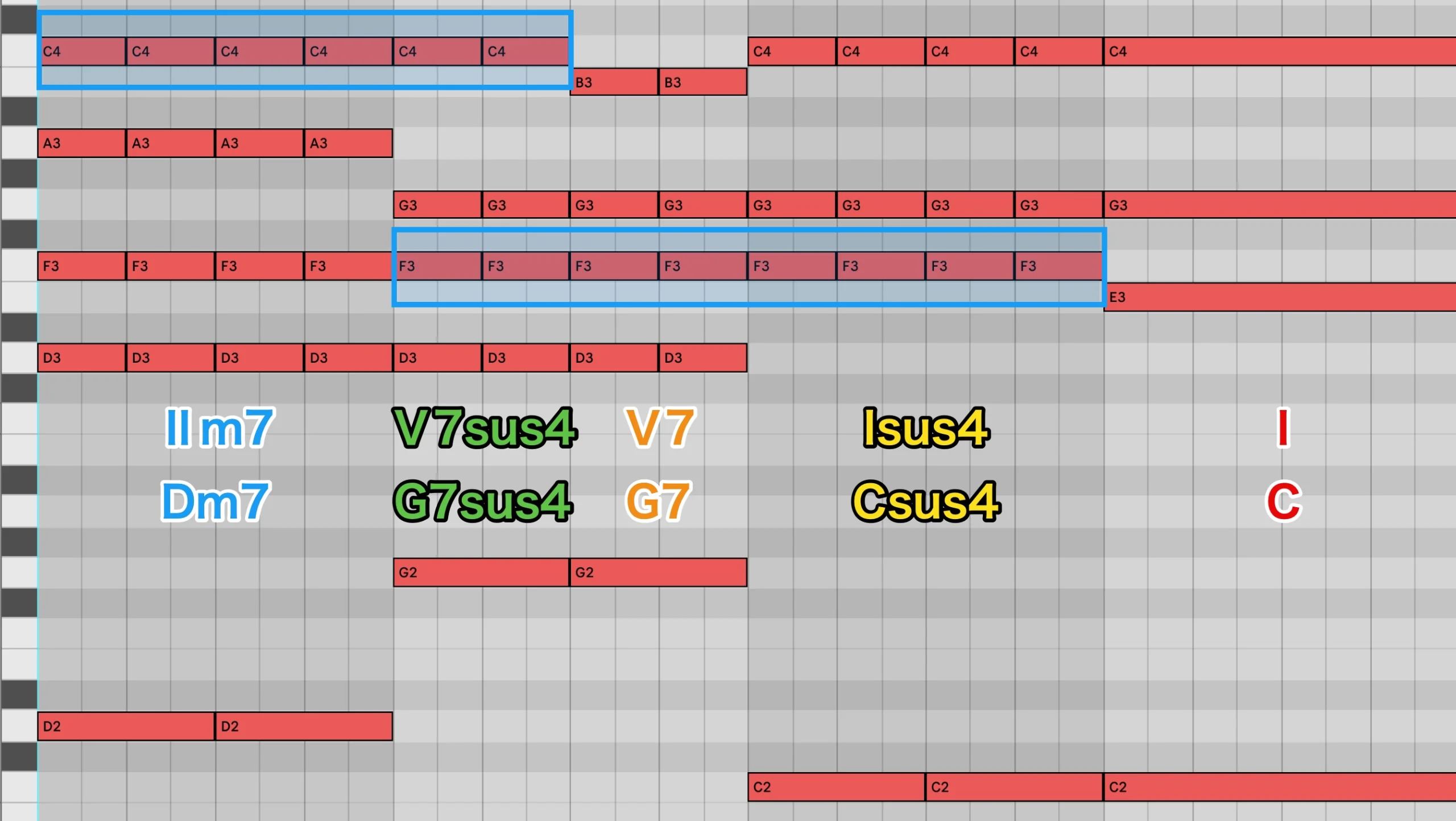sus系コード② 7sus4(ドミナントセブンス・サスフォー)コード/音楽理論講座
ドミナントセブンス・サスフォーコードの概要
今回も引き続き、sus系コードを学んで新たなコード進行の流れを作ってみましょう。
今回ご紹介するのは、「ドミナントセブンス・サスフォー」コードです。
通常のsus4や、ドミナントセブンスコードと併せて使用されることも多いですね。
ドミナントセブンス・サスフォーコードは、ドミナントセブンスコードと同様に、略して「セブンス・サスフォー」とも呼ばれます。
ドミナントセブンス・サスフォーの響き
まずは、ドミナントセブンス・サスフォーのサウンドを確認してみましょう。
コードの構成音を順に鳴らした後に、和音が鳴ります。
浮遊感がありつつ、透き通った印象を受けますね。
「ドミナントセブンス」との名が付いているのに、トライトーンの緊張感がないのも印象的です。
では、その後にC7コードを繋げてみましょう。
- C7sus4 → C7
浮遊感から、解決した印象も少しありますが、まだ不安定なセブンスコード、という流れですね。
ドミナントセブンス・サスフォーの表記
ドミナントセブンス・サスフォーは、以下のように表記されることが多いです。
最も一般的なのは、この表記でしょうか。
- Eドミナント・セブンス・サス・フォー= E7sus4
- Fドミナント・セブンス・サス・フォー= F7sus4
ドミナントセブンス・サスフォーの成り立ち
例として、C7sus4コードの基本形を、譜面とピアノロールでそれぞれ確認してみましょう。
サスフォー、ドミナントセブンスの構成が分かれば、覚えやすいですね。
実際に比べてみましょう。
サスフォーにm7th(♭7)が追加されている、あるいはドミナントセブンスの下三音(メジャー・トライアド)がsus4になっている(M3rdをP4thにしている)と考えればわかりやすいですね。
そして上述の通り、ドミナントセブンス・サスフォーコードにはトライトーンがありません。
ドミナントセブンス・サスフォーの基本形の構成を、まとめておきます。
- ルートからのインターバルでは R/P4th/P5th/m7th
- ルートを1としたスケールディグリーでは 1/4/5/♭7
ドミナントセブンス・サスフォーを使ってみる
前回のsus4コードも交えながら、変化を体感してみましょう。
まずは、通常のツー・ファイブ・ワンからスタートします。
- Key=Cメジャー : IIm7→V7→I(Dm7→G7→C)
続いてこれに、まずはCsus4を追加しましょう。
✳︎特に”サスペンディッド・ノート”(黄色く囲んだ箇所)に注目してください。
- Dm7→G7→Csus4→C
さらに、G7sus4の前にGsus4を追加してみると・・・
- Dm7→G7sus4→G7→Csus4→C
どんどん解決が遅れて、よりドラマティックな演出となりましたね。
具体的 には、前のDm7のC(m7)の⾳が伸びて、G7sus4にかかる形となっています。
sus4を使えば、トニックへの解決時だけでなく、その前のドミナントセブンスコードにおいても同様の作用をもたらすことができます。
このように解決に向かっていくことがsus4コードでは一般的ですが、色々な曲を分析してみると、sus4が解決せずそのままになっていたりIsus4/Vsus4/V7sus4以外のsus系のコードも見受けられます。
これらの点については、後々触れていきますので、ぜひ楽曲分析を並行して進めてみてください。
次回は、「add9(アドナインス)コード」について学んでいきます。
